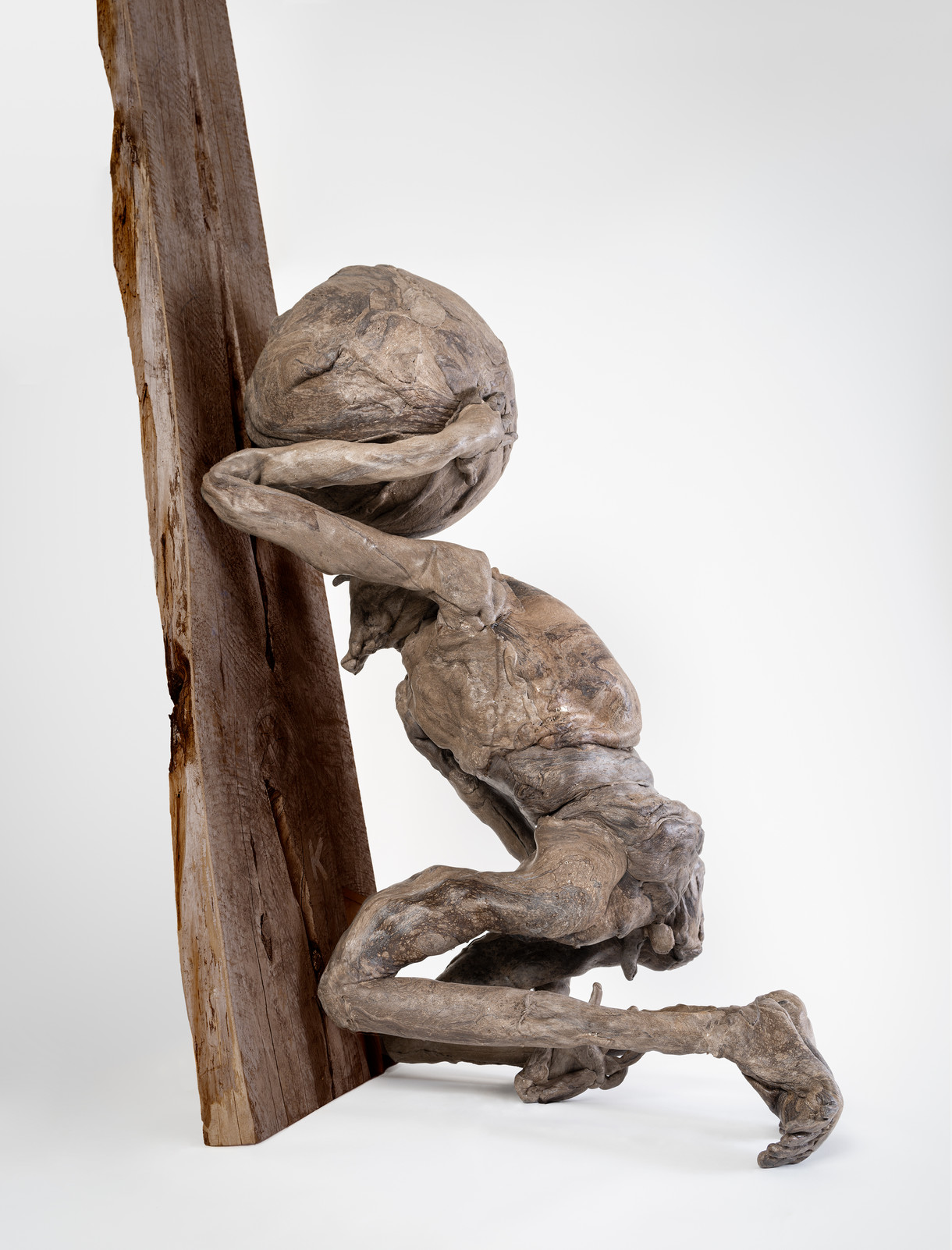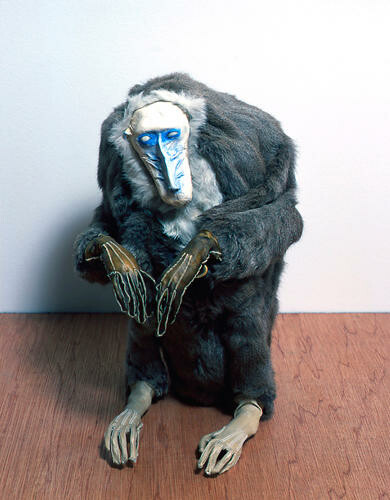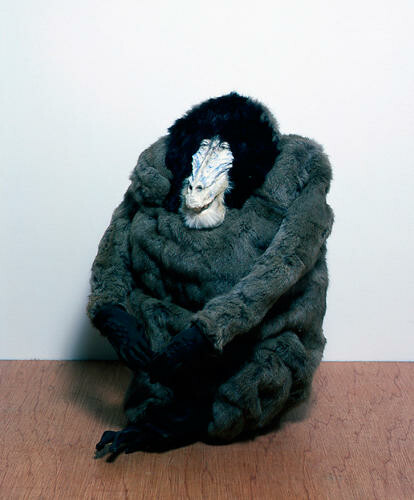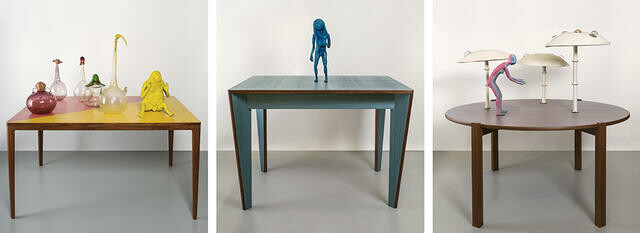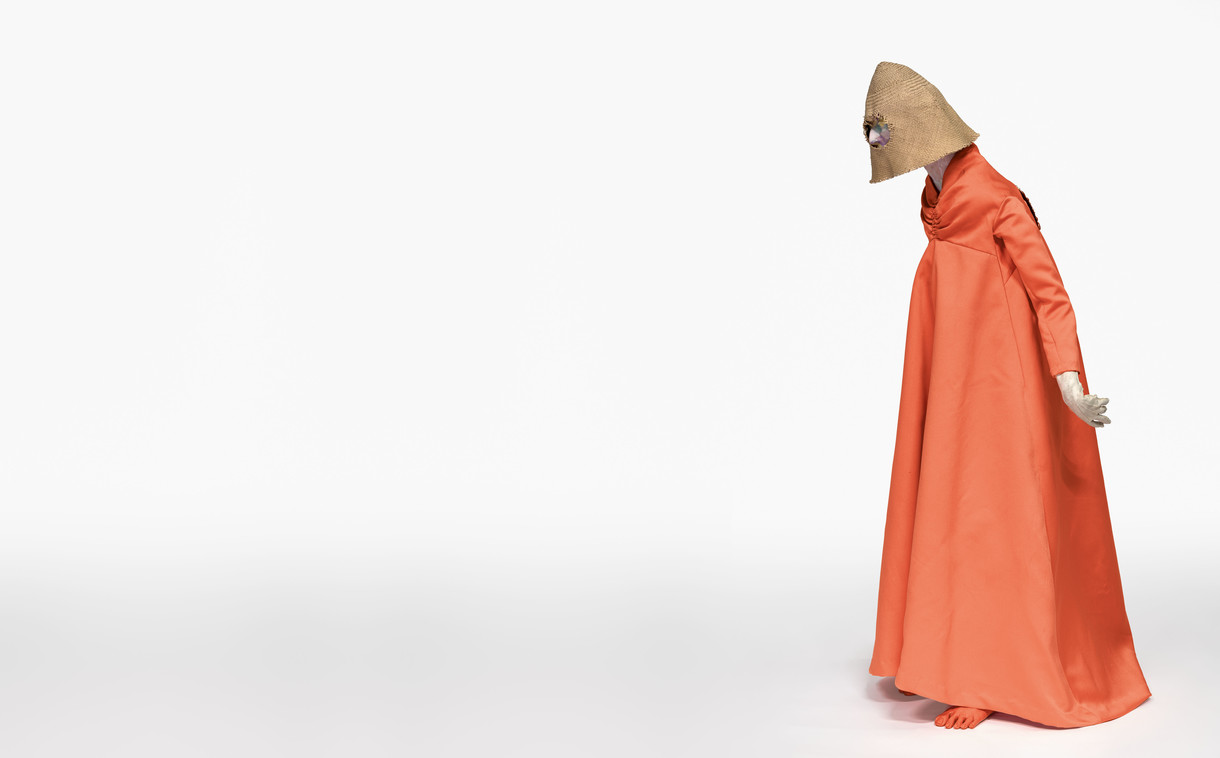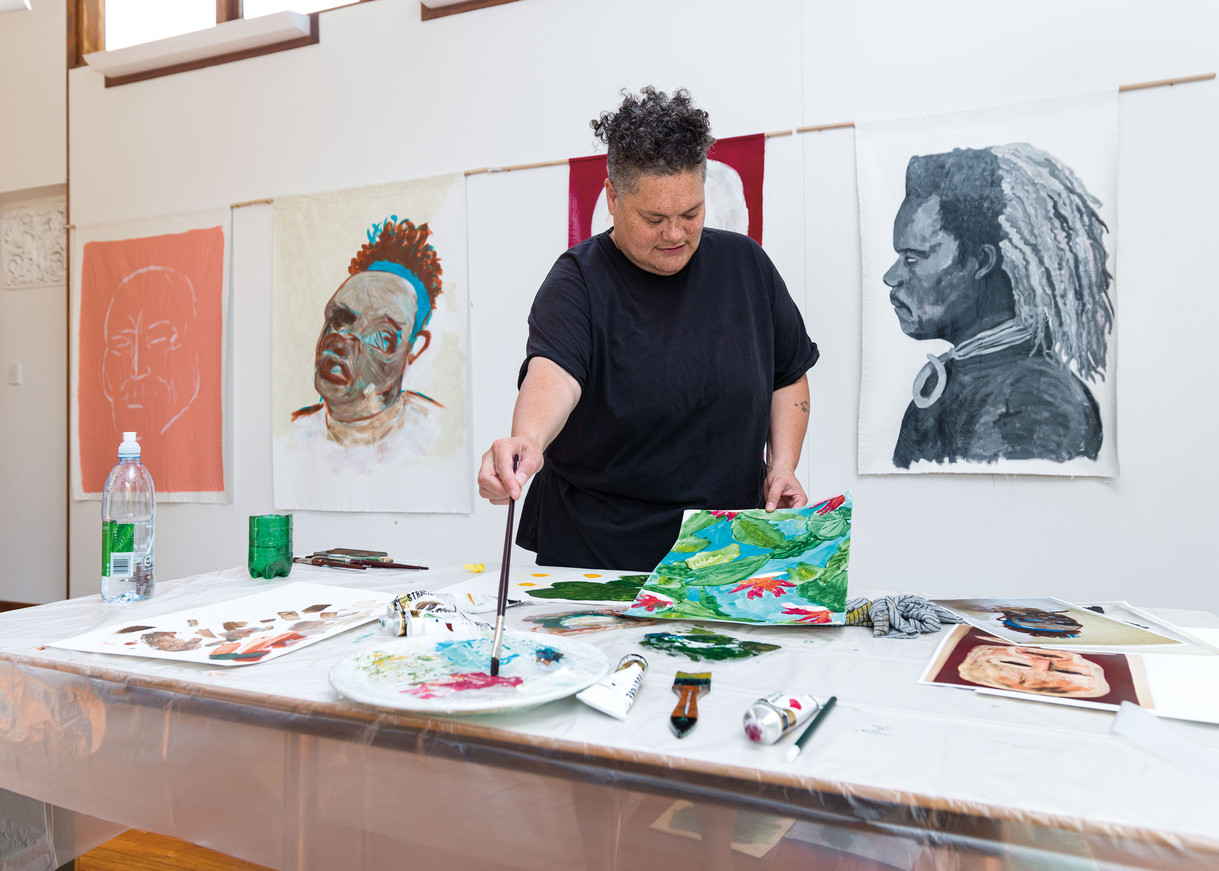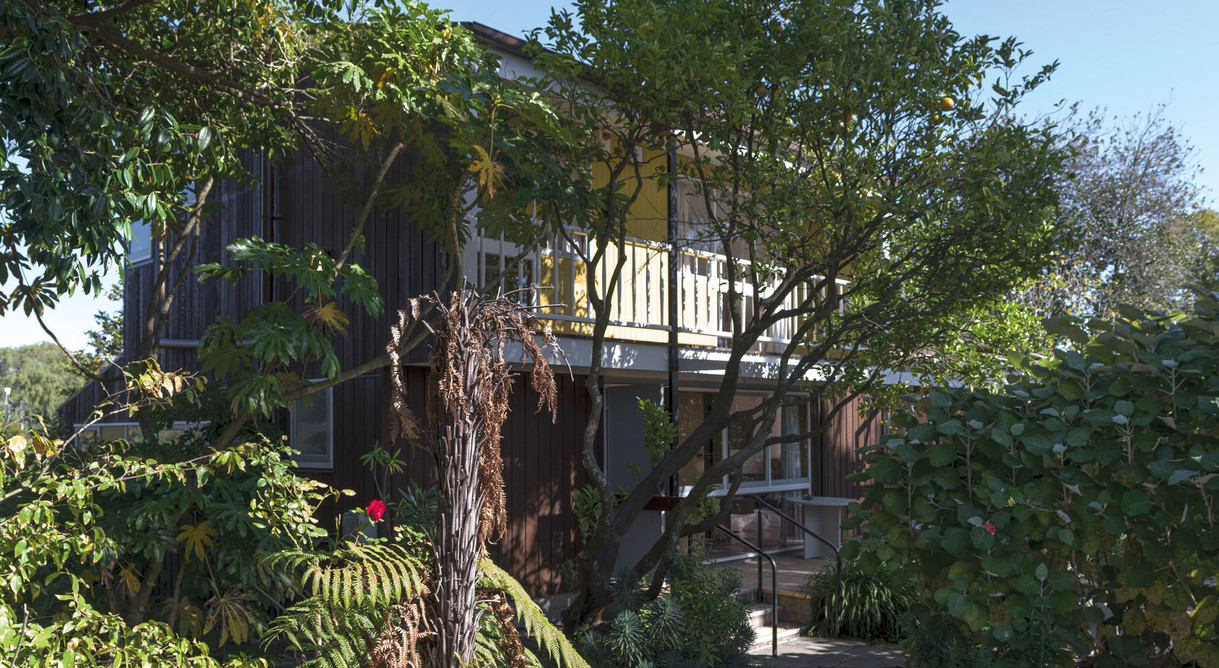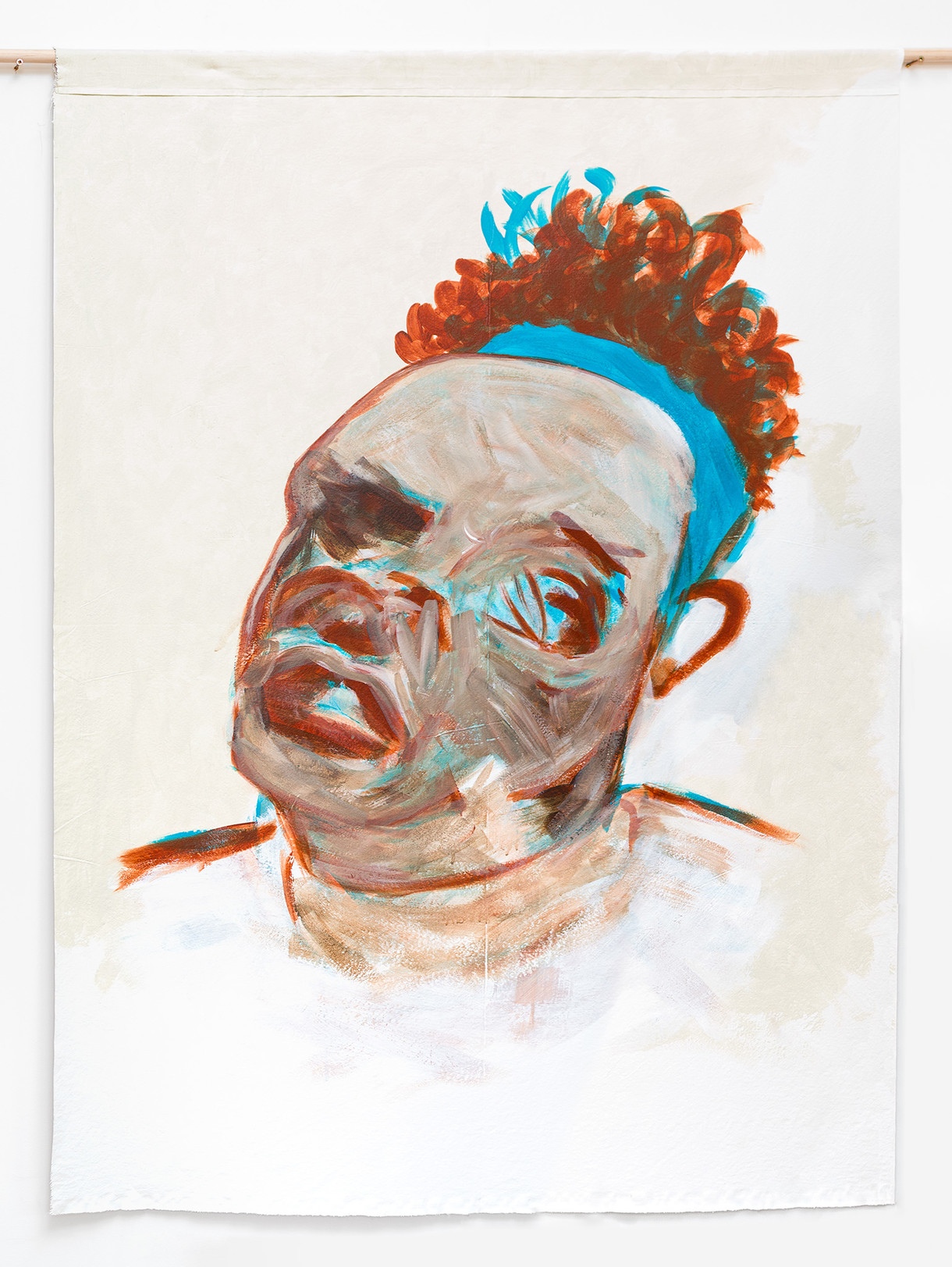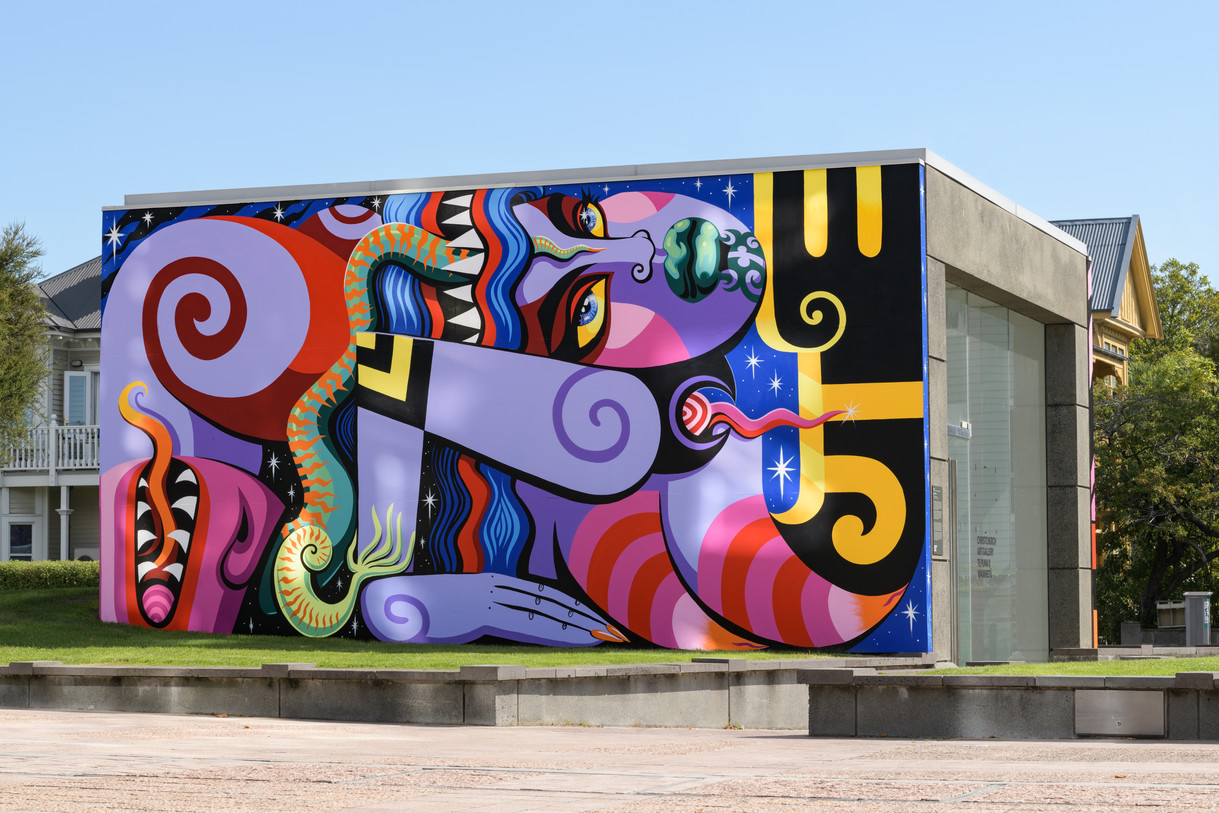Bury the Lede
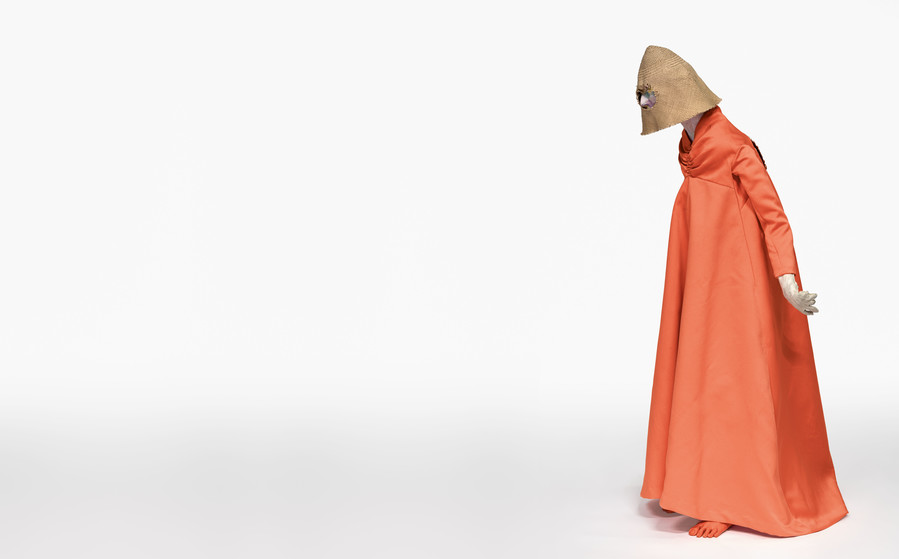
Francis Upritchard A Peach 2021. Steel and foil armature, paint, modelling material, fabric, metal, straw, rhinestones, leather gloves
From the side of a hill the woman and child – ectomorphic – hunting for cockles, look like wading birds. Siblings climb on top of each other and hold handstands like circus-adjacent cheerleaders in tie-dyed active-wear. Two write code and scale limestone boulders, competing with each other almost good-naturedly without mats. Weeds and things scrounged – pipi, lemons, parsley, small mushrooms, seaweed and bracken fronds – are eaten with brown rice. Later there are bruised peaches, grapefruit and hard pears with a whiff of quince kept in a bowl for the colours and smells – green, orange, gold, purple, brown, grey, black.
Underneath or beyond or behind or inside thought (consciousness in the intellectual sense, being up in the head, head chatter), there is much more to be aware of. In its shapes and volumes there are oceans of sense, experience and coloured information, in which vast marine animals live – prehistoric, post-historic, a-historic. They indicate new realities, purposes, directions, tasks and work. These are the other realms that are opened up by our imaginations and become new realities. But what happens when they come into contact with the transforming, glowing realities of others? The powerful agencies of colours, materials, people – of entities that are animal, vegetable and mineral – are hard to follow, let alone trace or index.
In Octavia Butler’s Parable of the Sower (1993), girls research and make plans to survive the inevitable breakdown of their home community. In this poverty dystopia, all neighbourhoods are poor and fortified from those who might rob them, use their water, or drag them below the breadline where all that is left is madness and violence. They are a people divided on the question of whether or not to abandon their world for another in space. There is a germinal religion within the fiction called Earthseed by which all life, all agencies, are conceived of as porous, melding, mutable and self regulating – and nothing is subject to hierarchies or one-way governance, theistic or otherwise. One of the girls tries to fathom its doctrine that everything we touch we change, and that, in turn, everything we change changes us. This reality, change, constitutes God in this schema, and within it the universe exists to shape God, and vice versa.1
The fictions that emerge out of Francis Upritchard’s practice are seemingly marked with such a way of knowing. Similarly ambivalent, the figures’ surfaces are patchwork-skinned, coloured with spectrum-split light and fabric patterns, dressed as if absorbing conglomerates, bowerbirds of the store-bought and hand-made. They are like retina images of things stared at (colours, shapes, colour-ways), cartooned rememberings of slices of aesthetics, or of fashion digested by an alien. There is an atmosphere of commune-inflected yoga-mats parsed through a cosplay Friday office-share work situation.
What I am driving at is that Upritchard’s work – with its non-specific new life forms, corruptions, evolutions, strange composites, aggregations – can well be understood as science fiction. It resembles collectives of entities anticipating the degradations of distinctions that are the result of being co-opted into generating novelty to support economic growth. The effect they have on each other, as matter affecting matter, produces assemblages, appearing as projections of a future implied by the events and beings of the present.
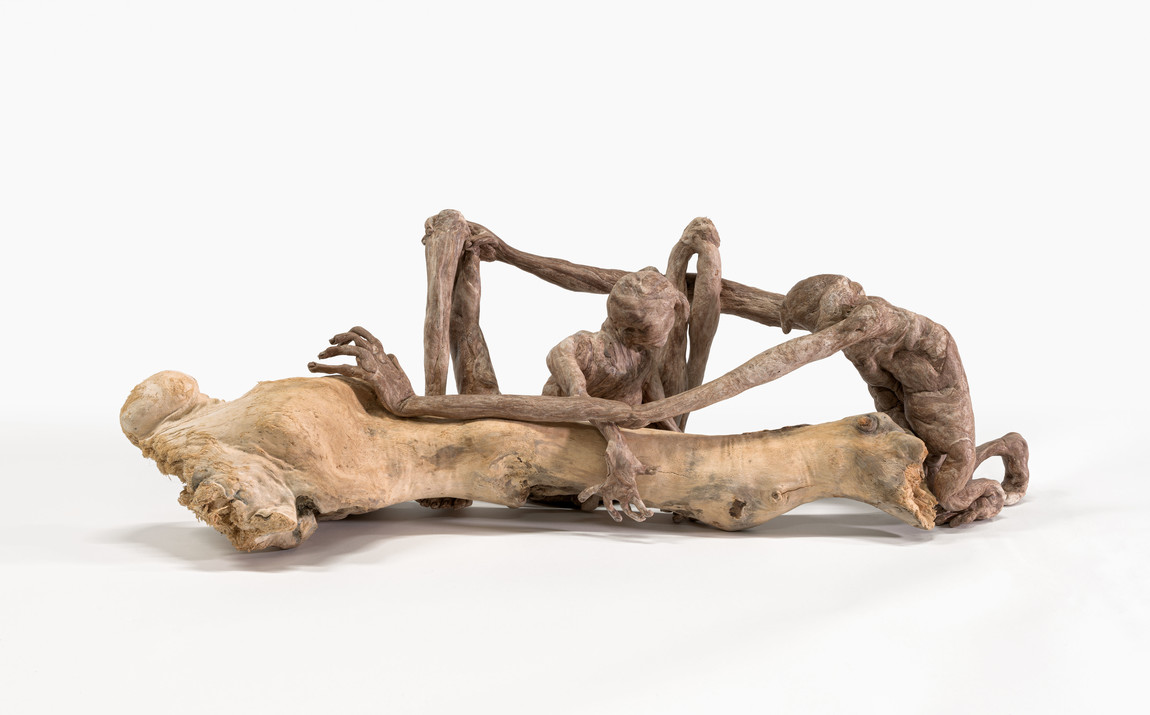
Francis Upritchard Stick Workers 2021. Rubber and woods
The objects have the weird feel of un-commissioned monuments in the sense that they “confide to the ear of the future”, as science fiction of the past reads when it is set close to the time in which one lives – Butler’s Parable of the Sower, for example, is set in 2024. In a memorial the residue of fused materials speaks of an earlier time of turmoil that has been ploughed into the earth and overgrown with other disturbances, grist for the mill. Victories and losses become the bonds that produce what comes next, and all that remains of the earlier struggle are “persistent sensations” that move faster and more freely than we do.2
Registering new life forms, this work has a certain detachment, the figures seeming apart from our strange but more familiar present. Such characters and entities can haunt a culture (or an existence) as it grows older through time, offering different qualities of absurdity or strangeness, even wrongness. More of a comedy – a commedia dell’arte flight of fancy, perhaps – their aerial roots dip back into the saltwater, like a mangrove noticing the sea has the same salinity as tears. Sisyphus is an apt image in this body of work, this parallel reality field, as an ambiguous figure of endurance, effort, perpetuality and supposed doom.
Albert Camus wrote The Myth of Sisyphus (1942) to explore his perception that the need for conventional truth in an unreasonable world gives rise to crushing absurdity. By insisting on searching for the absolute in the vague, the simple in the complex, the constant in the shifting, there comes the pain of failing to come to grips with something that is better marvelled at than mastered. Camus was disturbed greatly by suicide as a form of violence, and frames it as a destructive reaction to absurdity that precipitates suddenly out of a hellishly bland wage-labour moment. He urges the exploration of paths that can be taken as alternatives to unendurable torment. Absurdity, he offers, can be a tragedy or a freedom, but to live peacefully requires breaking the habit of spiky dissonance and accepting that all life is constant effort. By dissolving any unmet desire for truth with the love of unfolding strangeness, weight evaporates to polystyrene rock. In an emotional economy, gravity may only be a fear or hatred of strangeness, or a failure of ideals. Camus seems determined to not self-harm, or for others to be impervious to the evaporating violence of others.
Subject to the disturbance of experience, the limber self changes as it moves through time, space, materials and proximate others. The marks are on bodies, and images are fixed to surfaces – are these creatures specimens or effigies? Representations of specimens, I think, for when things are tried out in effigie (as they are in therapy or the museum) the stakes are not actual death. Pretend death it is, then – rather than “supposing that every philosophy was in its inception a long tragedy.”3 The writer is clear, hoping to find a way to live through this: “One must imagine Sisyphus happy.”4
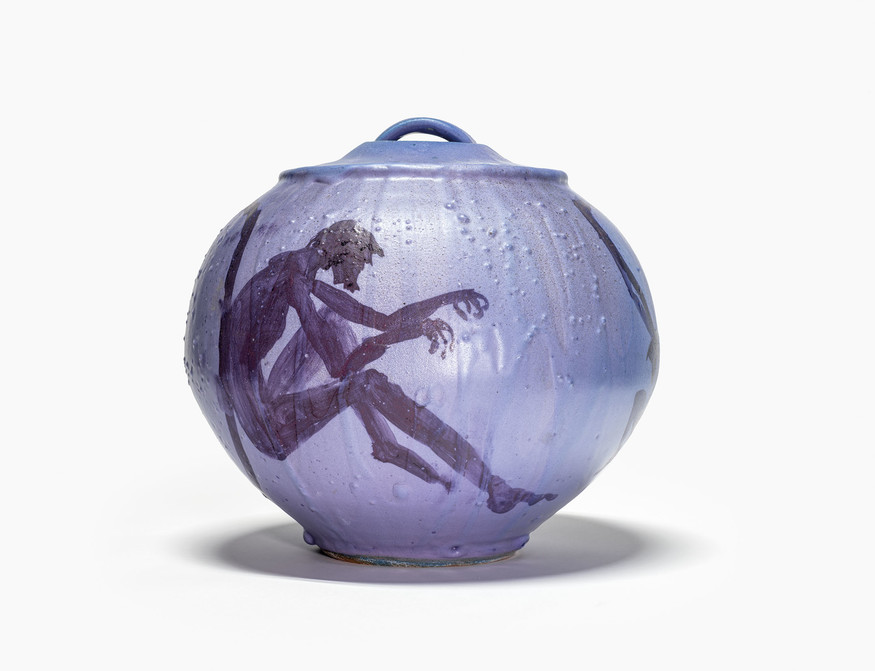
Francis Upritchard Purple Sisyphus Rests (Lidded Pot) 2021. Wood-fired ceramic, thrown by Nicholas Brandon
Emaciated from work – bending, lifting, pushing, reaching, crouching (and constant footnoting) – the figures and creatures peacefully, weightlessly, melt in the laughing knowledge that “The Absurd is not in [wo]man… nor in the world, but in their presence together.”5 The fact that that absurdity only happens when two things are put together that cannot ever be apart is colossally and bleakly funny in any uphill lifestyle. There is certainly a recovery from absurdity in the life-giving manipulation of materials, and the transformative (rather than merely transactional) exchanges between people and materials, as if, like casting cards, there is the possibility of rewriting the present.
It is hard to stop mudlarking, crouching down looking for treasures revealed in the tidal silt. Getting garnets and nails out of the mud is easy enough where they used to do shipbuilding, and the hope is for an emerald, coins or a long china pipe. Playing hunched crone, hermit, fool, and Robert Wyatt songs with Neil Young hair, pockets are weighed down by musket balls, medicine bottles and opalescent glass lumps. Nothing is said when the other is clearly thinking (or maybe not thinking, free of thought), hands still, raised limply, as if there are invisible handbags. Hats and gloves are for going out in the world not for wearing indoors, and shield the too-tired-for-spelling wearer from elements and intrusive eye rays.
There is the buried logic of life imagined as a goodwill store, or a local version of Balzac’s curiosity shop. Where the novel became a series of described details, a procession of facts as they occur, unshackled from cause and effect. The accumulated, random, settler-vernacular materials speak of how things were, in a time when things were made (by hand and machine) more carefully. A stranger who has been away returns periodically to find a place (of childhood and adolescence and art school) changed by the rumbling of the earth, gentrification and the advance of industries, of which property is now the colony’s largest. They miss the poet who had so many dogs and sold or gave away his work outside the Arts Centre.

Francis Upritchard Wall Paper Gloves 2021. Kid leather, paint, rings made by Karl Fritsch in silver with cubic zirconia gems
There are traces of the hands of assistants with the strength of extreme youth, agents of institutions, trusted friends, artist colleagues-in-making, veteran craftspeople with formidable skill-ranges, siblings, parents and skilled associates of fellow artists.6 Others, who squirrel away and digest found materials, work in parallel; rooted in the trees in readiness for a further but as yet undetermined meeting time.7 Houses have agency too – temporary residences, squats, whatever. Bill Sutton’s house, alone in Templar Street, flowered while occupied by workers and strangers, drinking in the energy of new life. The fig tree was registered, its strange pruning morphing together with beloved stick insects from sub-sub-tropical places.
Bearded men wander through the frame, carrying things, hunched, curved by their work and their determination. There are hobby potter ‘pebble’ necklaces from the 1970s, examples from a vast accumulation housed elsewhere on the peninsula by a maker of watercolour paints, and black-belt assessor of second-hand goods. The felt from the stoned-logic hat came from the leftovers of an alternative high school’s printmaking department. Works were made in the Coromandel bush-studio of a potter who vacated his earthly body some years ago, with a group of artists determined to improvise in clay and consume each other’s visual ideas next to a mini railway.8
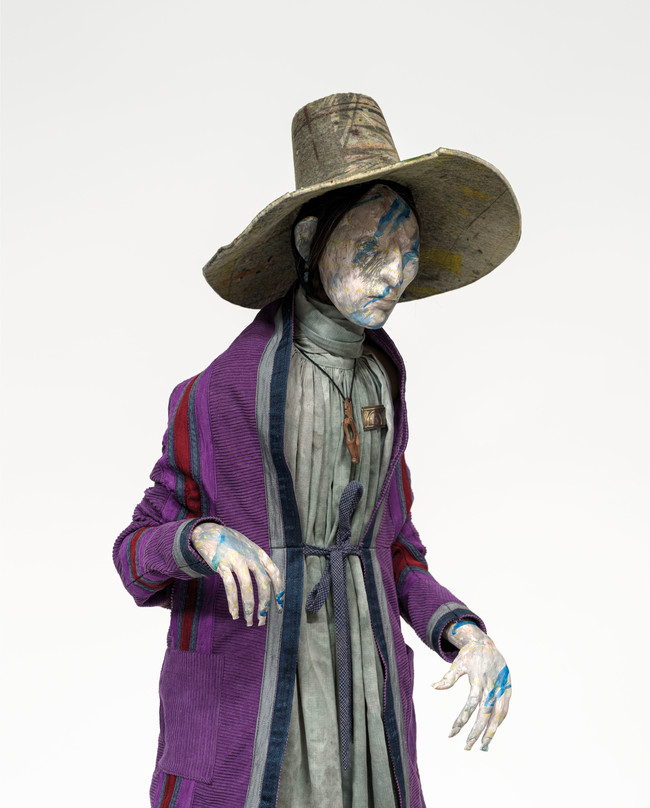
Francis Upritchard Printer 2021. Steel and foil armature, paint, modelling material, fabric, metal, felt, kangaroo hide, hair
A lifetime of collected materials – handmade textiles, utensils, books, clothes, things made from cloth, mats, household items, brutally sharp tools
– are sorted through and mostly given away by daughters clearing a house. A large elongated houseplant is given an honourable burial, and here comes a tall man with a bag (and hands) full of rocks. They are pushing a stone up a mountain, a car down the road, lifting a rock off a lorry and over a wall into a garden. Smelly balata rubber from Brazil needs to be soaked every month and then worked with in pairs because of its gloopiness and the logistics of modelling attenuated figures. Figures made from absorbed exertion stretch their sinews and lose condition, thin like yogis but without the obvious wisdom.
Mum rings to quote a passage to me from an Australian novel about eucalypts where paragraphs are likened to paddocks, “supposed to fence off wandering thoughts”, and trees flower “in a mass of gaudy asterisks”.9 The figures stay, still and pondering, on the verge of sleep or waking: are there such things as animal ghosts? Surely the spirit world is not anthropomorphic. Later, they were showing children how to make a small outrigger sailboat out of flax stems, with an always-sharp pocketknife. With violently good eyes for textiles, and happy to shorten a golf-club by half if it means a smaller person can join in, they draw a bath outside in a white plastic baby tub under the tree so the children can take turns washing the sand off their bodies.
Having perfect, fleeting peace, these watchers, witnesses, projections, bringers, admixtures and vectors are in repose, only aware of the present and the eels swimming in the creek between the rocks they are standing on. Contra-individualistic, their molecules spread into the air like the volatiles off smelly rubber or a tarry perfume extract. They bear a politics of mutual transformation – their surfaces porous, reactive, receiving and impregnating, sticky, diffuse. Like the smell coming from a book mingling with the mucus lining of the nose to make a new awareness that warms us up for the words of the story.
Notes are written, insults, dyslexic-seeming formulae, on the white backs of rangiora leaves. Aphasic scribbles with diagrams, flying words. Another member comes back from herding sheep, running up hill and down dale tirelessly in shorts and expensive socks and base-layers. An old man milks goats outside his hut in the bush keenly waiting while the kiln makes the clay’s molecules move closer together and bond. An old painter uses a tea trolley for balance as he goes from meat grinding for a shepherd’s pie to watering his orchids (from orchis, the Greek for testicle) for the first time after winter during which they must not be watered. What will we do with all of aunty’s looms? Will someone please go and see if uncle is still sleeping?








